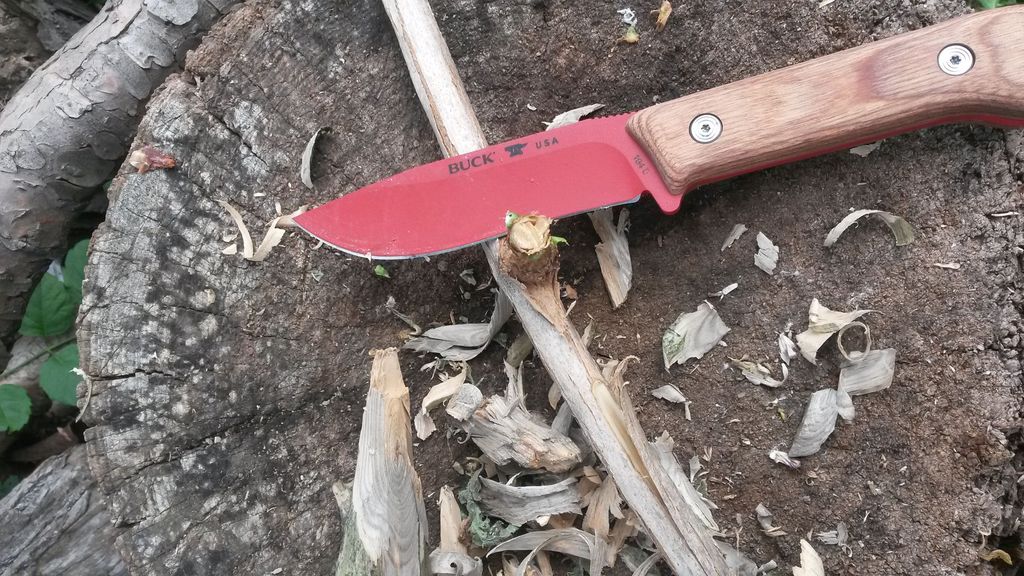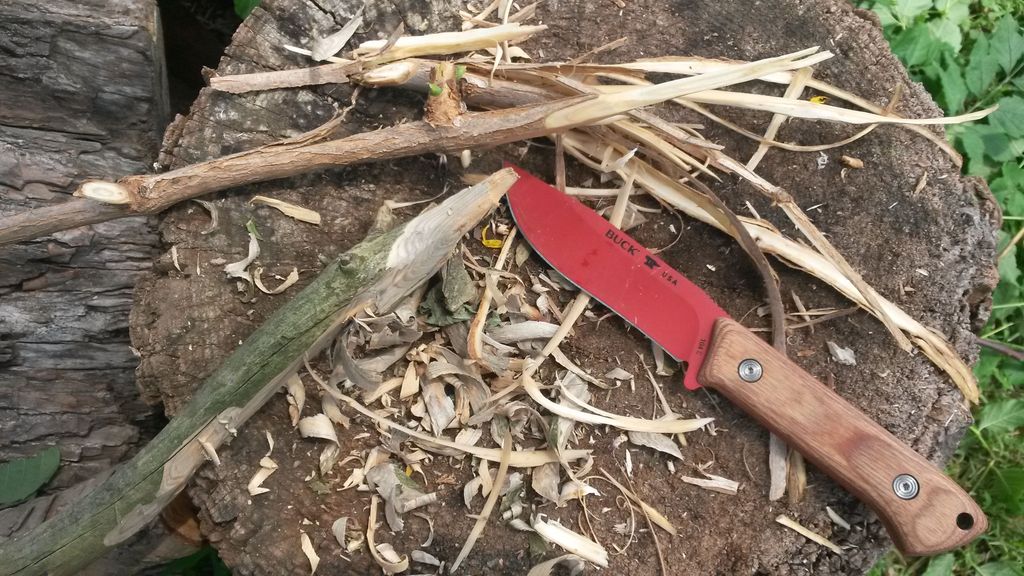Lodd,
I don't care about any knife maker as a brand other than Buck. Some comments based on my experience and my shaky understanding of history follow. Like you, I wish I could find a knife that suited my preference that says "Buck" on the tang. Perhaps someday.
A buddy of mine is a professional carpenter and is into old hand tools. He hand splits clapboards for his old home restoration and has recently taken up spoon carving. We compare notes on knives and comment on my Mora companion saying, "It wants to throw a heavy curl." Point being, there's wood working and there's wood working. When doing fine work, like working on a spoon handle, you may want a very thin curl made with relatively light pressure and when doing heavy work, like peeling off shavings to make a fire, you may want comparatively thick curls made with a lot of hand pressure.
I've come to conclude that
a) making curls is best done with a convex EDGE (the shape near the apex)
b) the natural thickness that an edge makes depends on thickness of the blade behind the edge; namely, thicker edge -> thicker curl and thinner edge -> thinner curl.
I've also concluded that, as BuckShack and LostViking have shown, that a good hand can produce good curls with just about any knife. In particular, if I'm current "into" a knife, then I can enjoy using it on wood regardless. Up to a point. But on longer carving sessions, especially when I have multiple knives nearby, I tend to gravitate towards different knives because as my hands tire, some knives (for me) are just easier to keep using.
 Wood knives
Wood knives by
Pinnah, on Flickr
Many years ago, I started making these "wind twisters" to pass the time when sitting on a beach or around the fire in the back yard. My wife likes to hang them in the trees in the surrounding woods. The cuts require a relatively heavy hand, more like making feather sticks and less like spoon carving.
This stick has a tighter curl than most and I've used all of these knives in making this one and other. Yesterday, I worked on the stick during a day long family gathering using the recent Buck 110 on the far right. Similar to BuckShack and LostViking's shots, I made fine progress with the thin hollow grind on the 110.
This said, I've laid out the knives in rank ordering of my preference in doing this kind of wood working. Moving from right to left from OK to best: Buck 110 (c2005), Opinel #9, Buck 110 (c1977 with a semi-hollow grind), Schrade-Walden H-19 (c 1960s, modified to drop point), Mora Companion (reprofiled to full convex). I find that the Opinel and semi-hollow ground 110 grab curls with more authority and control and the Mora Companion is simply the top of the heap. When my hand is shot, that is the knife I want in my hand time and again.
In term of use as a "camp knife", for me, the winner is the H-15 which is similar in size to the Buck Compadre and, I think, has a lot more in common with the Compadre than first appears. For me and the way we camp, my camp knife needs to balance between food preparation and wood working. For example, a few weeks ago we were camping and had foil dinners, which required slicing up potatoes and carrots one the one hand and then making kindling and shavings on the other hand. The Opinel is (by far) the best slicer of the bunch and the Mora is (by far) the best wood crafter but the thin convexed sabre grind of the H-15 give me the best balance. It's thin enough to slice well but the convexed sabre grind makes big shavings with authority and can still split small kindling easily.
In terms of history, there's a really nice article on camp knives that appeared on the Master Woodsman web site. In particular the author discusses the Marbles Ideal (top) which he argues set the template for the American stacked washer style knife and the later Marbles Expert (middle).
It's hard for me to look at the Ideal and Expert when talking about the Buck Compadre (or Endeavor) and not see a certain resemblance to the blade shapes and proportions.
One of the advances made in moving from the Ideal to the Expert was moving to a thin convex (sabre) grind. The author notes:
Yet, the Ideal was not ideal. WIth its 3/16″ spine it was still a bit thick and heavy for the most discriminating of woodsmen. Stewart Edward White complained that: The common mistake among amateur hunters is that of buying too heavy a knife with too thick a blade. Unless you expect to indulge in hand to hand conflicts, or cut brush, such a weapon is excessive. He proclaimed a butcher knife of good make is one of the best and cheapest of sheath knives. His opinion was shared by most other wood-wise campers.
Marbles responded with two new models: the Expert in 1906 and the Woodcraft in 1915. They were both thin-bladed-convex-edged models, and they quickly became the choice of the classic camping masters: White, Miller, Kreps, Mason and even Kephart himself. The Woodcraft went on to become Marbles best seller of all times. Other companies copied them. My Boy Scout sheath knife (now long-lost) was a Marbles-inspired model of a forgotten brand, and my fathers sheath knife (now in my possession) was a Marbles-influenced model made by Western.
The full article is here:
http://masterwoodsman.com/2013/classic-camping-knives/
One of the companies that copied Marbles (besides Western) was Schrade-Walden, and later Schrade. The Schrade H-15 had similar lines to the Ideal and Expert (and Compadre), while the 147 had lines somewhat like the Marbles Woodcraft. Here is a Schrade branded (and unmodified) H-15. The key feature relative to this discussion is the grind, which like the Expert is a thin convexed sabre grind.
 Schrade H-15
Schrade H-15 by
Pinnah, on Flickr
My highly speculative understanding is that things changed dramatically from the 60s to the 80s as blades moved from hand ground to being ground by machines which increasingly used smaller radiused electric grinding wheels. Buck and Schrade both moved from sabre grinds to hollow grinds, although Buck moved to hollow grinds sooner I think while Schrade kept some sabre ground blades in their line up till the end. I suspect that the success of Bob Loveless's hollow ground knives had something to do with the aesthetic shift. I found a quote (but can't find it now) by Loveless that indicated that his move was more about aesthetics to sell more knives and not about performance. I think it's in his book on knife making.
In any event, I think a thinner convex sabre ground Compadre or Endeavor (minus the serrations) would be Ideal (pun intended) and in someways, a return to Buck's sabre ground roots. Until then, the US auctions have plenty of old Schrades and Westerns and the European retail market has a lot of Scandinavian blades that are easily convexed.















